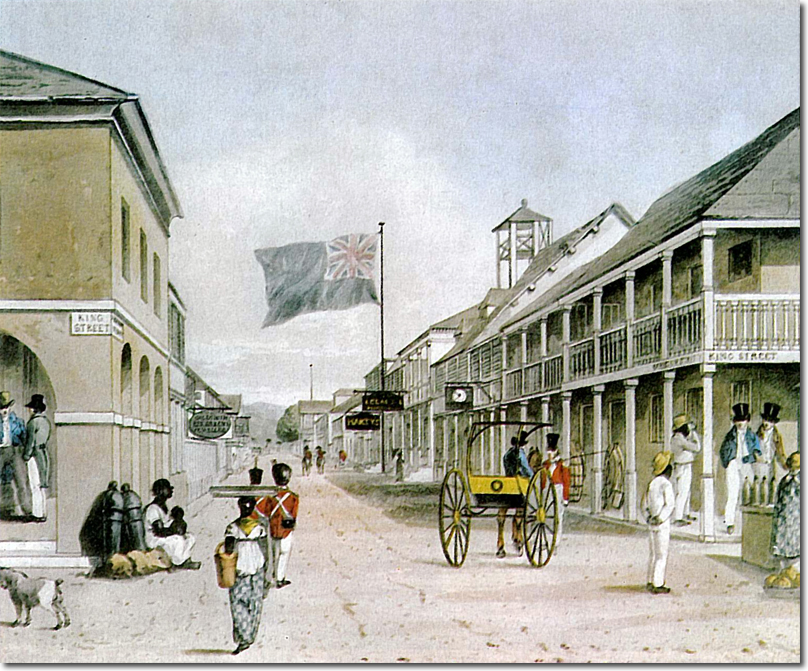|
|


|
|
The soldiers in this painting were not just for the defence of the colony, they were also to guard the settlement from slave uprisings which were common during the days of slavery.
Kingston's history had long been dominated by the military. From its foundation in 1692, Kingston (the capital of Jamaica 80 years later) grew fat on the profits of war. "By augmenting the consumption of merchandizes," wrote a shrewd observer in 1774, "war, so fatal to some states, has ever been the best friend of this town." It had replaced earthquake-devastated Port Royal as commercial centre in 1692 and enjoyed an unassailable position. Its harbour was almost completely landlocked and cunningly positioned forts ' coupled with treacherous shoals made its ., approachesimpassable to an enemy.While ' t the interminable struggle with France and Spain depleted Britain's coffers, it brought untold wealth both to the town's merchants and to privateers who had no scruples about trading with the enemy one day and rifling his treasure-fleets the next. In fact Jamaica did so well out of violence that its motto was popularly supposed to be "Peace with England and war with all the rest of the world." Whenever peace descended on the Caribbean, Kingston plungedinto despondency. Profiteers packed their bags and privateers sailed away in search of fresh spoils, leaving the merchants with the mundane task of making an honest living. But to everyone's surprise, when lasting peace came in the early 19th Century, it was the traders who put Kingston back on its feet again. By 1807 the town was generally considered to be the capital of the West Indies. Its streets were wide and airy, and the wealthier citizens lived in spacious and elegant mansions, The merchants took a particular pride in their gigs and chaises. "A handsome vehicle of the latest fashion, with a spirited horse of fine figure and good action, well groomed and elegantly caparisoned seems the acme of their ambitions," wrote one visitor. By 1835 the town had built up a substantial trade with the United States and South America. During harvest-time the wharfs were piled high with rum, sugar, ginger, coffee and pimento. The hot, sandy streets were crowded with drays 11 hauling the bounty of the island to the quays and returning with casks of coal, ~ barrels of herrings, salt beef, pork, butter, machinery, clothing and flour. But, as the 19thCentury wore on, Kingston began to decay. The demand for Jamaican goods fell off and in 1860 a visitor sadly wrote "It looks what it is a place where money has been made, but can be made no more." In 1907, the town that had been born out of an earthquake, perished in one, and a new capital city rose from the ruins. |
Armed Forces | Art and Culture | Articles | Biographies | Colonies | Discussion | Glossary | Home | Library | Links | Map Room | Sources and Media | Science and Technology | Search | Student Zone | Timelines | TV & Film | Wargames